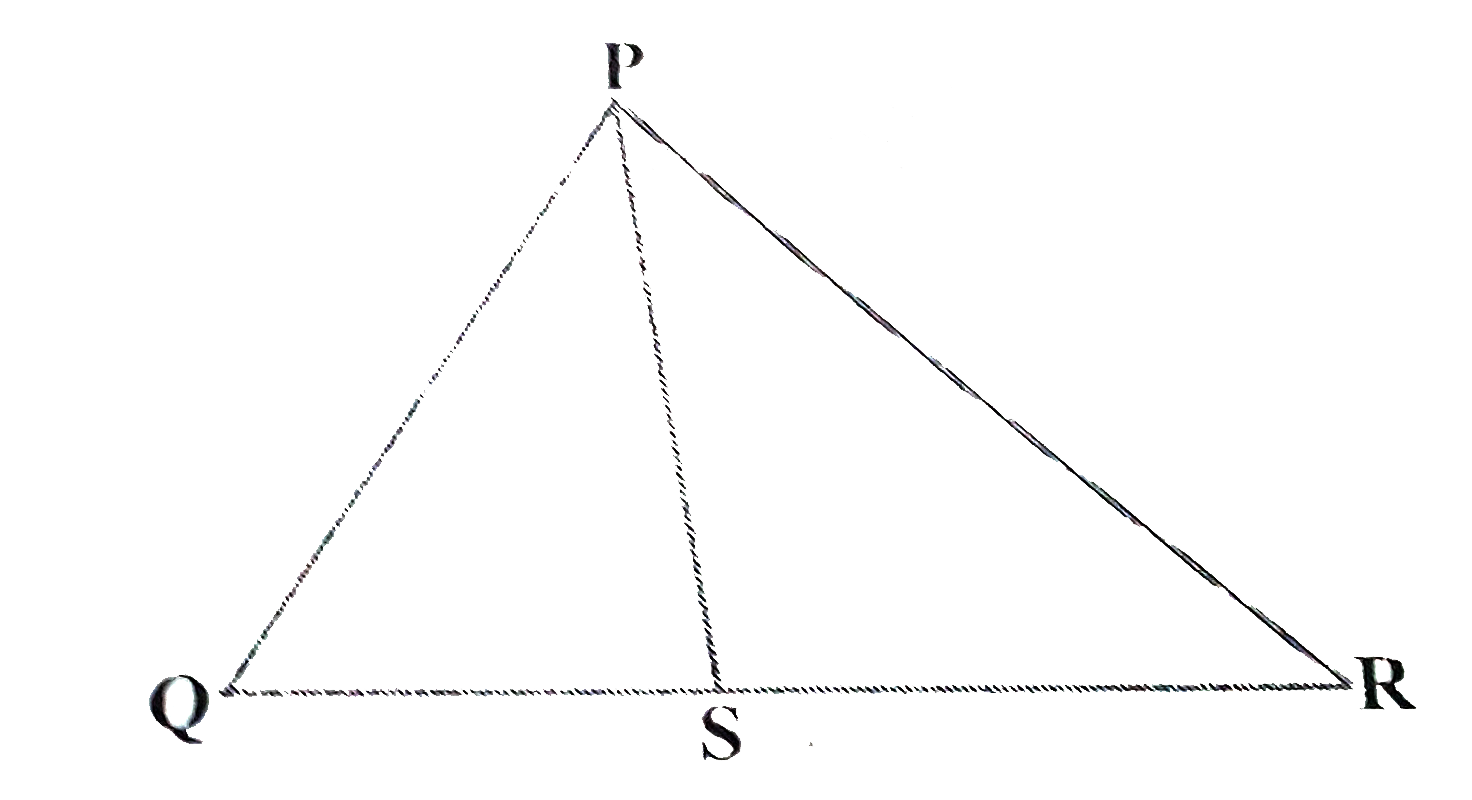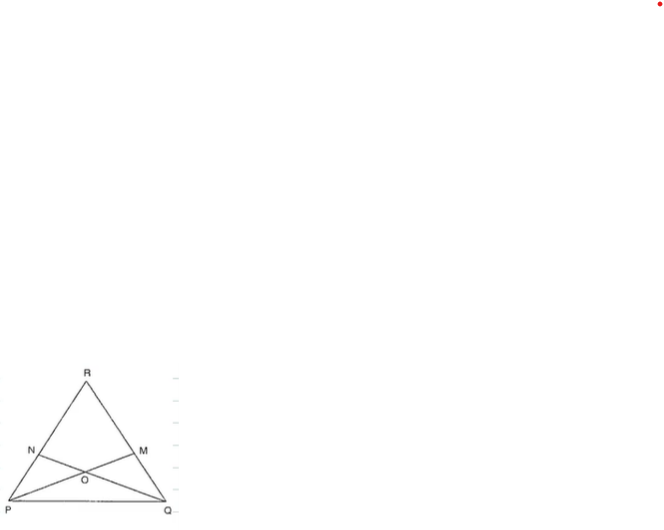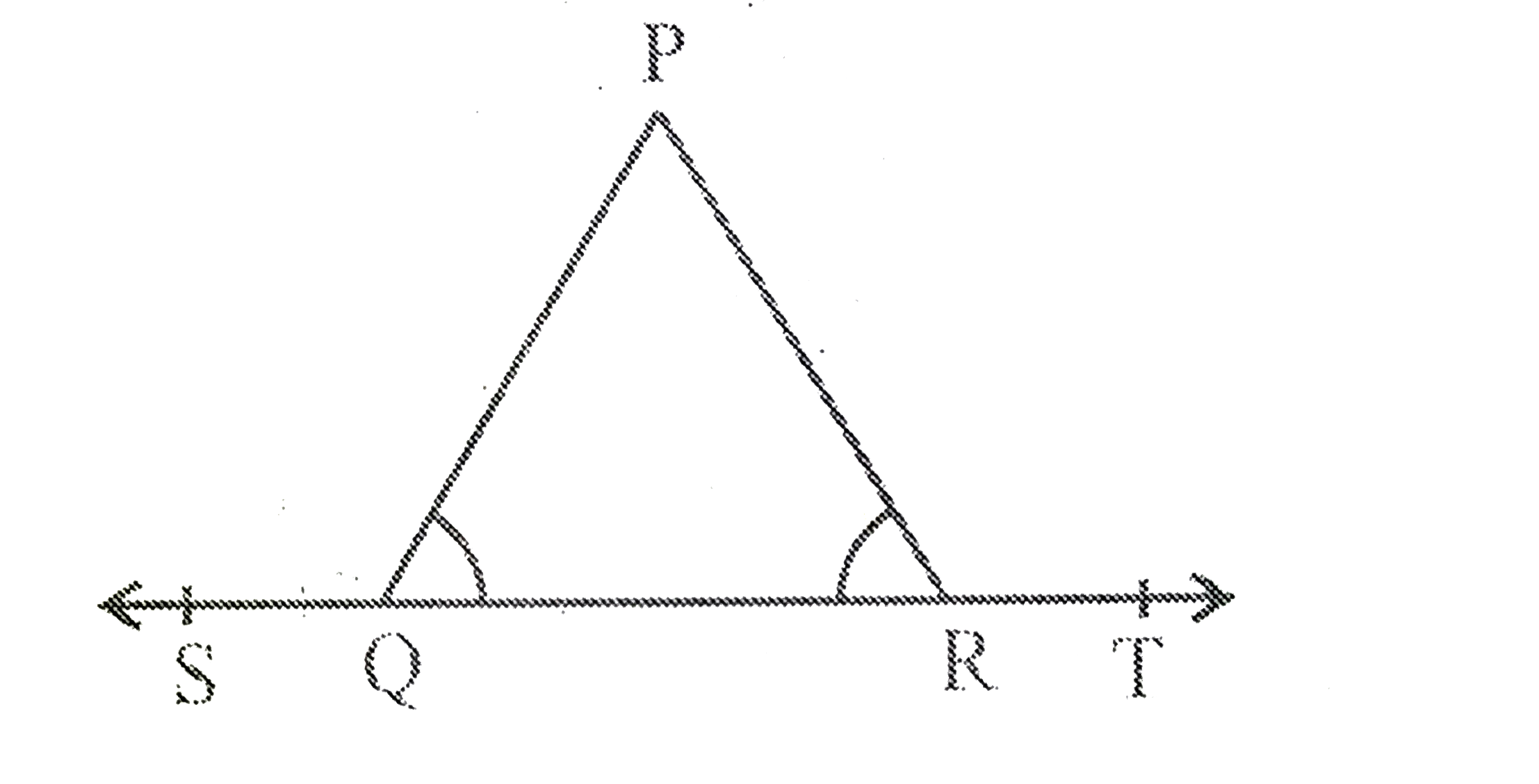In PQR, QM⊥PR and PR2−PQ2=QR2 . Prove that QM2=PM×MR
To prove that QM2=PM×MR given the conditions in triangle PQR where QM⊥PR and PR2−PQ2=QR2, we can follow these steps:
1. Identify the Given Information:
We have triangle PQR with QM⊥PR and the equation PR2−PQ2=QR2.
2. Use the Pythagorean Theorem:
From the equation PR2−PQ2=QR2, we can rearrange it to:
PR2=PQ2+QR2
This indicates that triangle PQR is a right triangle with the right angle at Q.
Hint: Recall that in a right triangle, the square of the hypotenuse is equal to the sum of the squares of the other two sides.
3. Label the Angles:
Let’s denote the angles in triangle PQR:
- Let ∠PQM=θ1
- Let ∠QMR=θ2
- Since QM⊥PR, ∠Q=90∘.
4. Establish Relationships Between Angles:
Since ∠PQM+∠QMR+∠Q=180∘, we have:
θ1+θ2+90∘=180∘
Therefore, θ1+θ2=90∘.
Hint: Use the property that the sum of angles in a triangle is 180∘.
5. Use Similarity of Triangles:
From the angles, we can conclude that triangles PQM and QMR are similar by the AA (Angle-Angle) criterion:
- ∠PQM=θ1
- ∠QMR=θ2
- Both triangles share the angle Q.
6. Set Up the Proportions:
Since the triangles are similar, we can write:
PQQM=QMMR
Hint: Remember that in similar triangles, the ratios of corresponding sides are equal.
7. Cross Multiply:
By cross-multiplying the proportion, we get:
PQ⋅MR=QM2
8. Relate PM and PQ:
Notice that PQ=PM+MQ. Therefore, we can express PQ in terms of PM and MR:
PQ=PM+MR
Hint: Consider how segments relate in the triangle.
9. Substitute and Rearrange:
Substitute PQ into the equation:
(PM+MR)⋅MR=QM2
This simplifies to:
PM⋅MR+MR2=QM2
10. Final Rearrangement:
Since we need to prove QM2=PM⋅MR, we can conclude that:
QM2=PM⋅MR
Hence, we have proved the required statement.
Conclusion:
Thus, we have shown that QM2=PM×MR.
We have triangle PQR with QM⊥PR and the equation PR2−PQ2=QR2.
From the equation PR2−PQ2=QR2, we can rearrange it to:
PR2=PQ2+QR2
This indicates that triangle PQR is a right triangle with the right angle at Q.
Let’s denote the angles in triangle PQR:
- Let ∠PQM=θ1
- Let ∠QMR=θ2
- Since QM⊥PR, ∠Q=90∘.
Since ∠PQM+∠QMR+∠Q=180∘, we have:
θ1+θ2+90∘=180∘
Therefore, θ1+θ2=90∘.
From the angles, we can conclude that triangles PQM and QMR are similar by the AA (Angle-Angle) criterion:
- ∠PQM=θ1
- ∠QMR=θ2
- Both triangles share the angle Q.
Since the triangles are similar, we can write:
PQQM=QMMR
By cross-multiplying the proportion, we get:
PQ⋅MR=QM2
Notice that PQ=PM+MQ. Therefore, we can express PQ in terms of PM and MR:
PQ=PM+MR
Substitute PQ into the equation:
(PM+MR)⋅MR=QM2
This simplifies to:
PM⋅MR+MR2=QM2
Since we need to prove QM2=PM⋅MR, we can conclude that:
QM2=PM⋅MR
Hence, we have proved the required statement.
Thus, we have shown that QM2=PM×MR.
Topper's Solved these Questions
Similar Questions
Knowledge Check
If P:Q:R=2:3:4 and P2+Q2+R2=11600,
then find (P+Q−R)A15B16C18D20If P : Q = 2 : 3 and P : R = 4 : 5, then what is (P + Q) : (Q + R)?
A20:27B20:17C10:11D20:29if P:Q:R=2:3:4andP2+Q2+R2=11600, then find P+Q+R, where P,Q and R are whole numbers.
A15B16C18D20
In figure PS is the bisector of ∠QPRof ΔPQR. Prove that QSSR=PQPR.

View SolutionIn PQR , M and N are points on sides PQ and PR respectively such that PM=15cm and NR=8cm . If PQ=25cm and PR=20cm state whether MNQR .
View SolutionIn ΔPQR, if PQ=QR and L,M and N are the mid-points of the sides PQ,QR and RP respectively. Prove that LN=MN.

View SolutionIn Figure, ∠QPR=∠PQR and M and N are respectively on sides QR and PR of PQR such that QM=PN . Prove that OP=OQ, where O is the point of intersection of PM and QN.

View SolutionIn Fig. 6.15, ∠PQR=∠PRQ, then prove that ∠PQS=∠PRT.

View Solution

